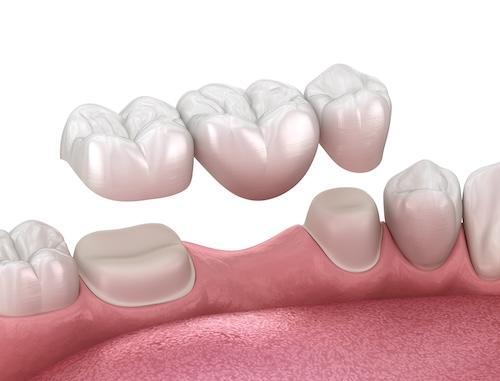 One of the most common needs for a dental crown is when a large filling in the back molar begins to fracture. This happens over time, and amalgam fillings—the grey-coloured metal fillings that used to be standard—are particularly susceptible. Because the filling is so large, there is usually very little left of the natural tooth structure left. Replacing the filling is not possible, and a dental crown is the best choice for repairing the tooth and preventing further damage.
One of the most common needs for a dental crown is when a large filling in the back molar begins to fracture. This happens over time, and amalgam fillings—the grey-coloured metal fillings that used to be standard—are particularly susceptible. Because the filling is so large, there is usually very little left of the natural tooth structure left. Replacing the filling is not possible, and a dental crown is the best choice for repairing the tooth and preventing further damage.
Dental crowns are also used cosmetically to “cap” a tooth that might have an odd shape or is discoloured and resistant to teeth whitening. With a dental crown, you’ll have a natural-looking tooth restoration that is made to blend in seamlessly with your teeth. No one except you and your dentist will know you have a crown.
Other reasons for dental crowns include repairing a tooth that is cracked or worn, such as what can occur with teeth grinding (bruxism). Crowns will alleviate any sensitivity in worn teeth. (You’ll want to address the teeth grinding once you cap your teeth to avoid the same problem from occurring again.)
Dental crowns are also placed on the teeth adjacent to a space in your mouth to hold a dental bridge in place.
Why Do I Need a Crown Instead of a Filling?
Dental fillings are used to seal a tooth after your dentist has removed tooth decay. But fillings don’t strengthen a tooth; in fact, a large filling can weaken the tooth structure—especially when enough of it has been removed to make room for the filling. When that happens, placing a dental crown instead of a filling gives patients a strong option that will be more reliable in the long-term. In addition, often removing the decay has removed too much of the tooth structure, making it unlikely it could support a filling. A dental crown is the best option.
Why Do I Need a Dental Crown After a Root Canal?
A root canal removes the live tissue in the root of the tooth when it is infected. Removing the nerve and blood supply to the tooth eliminates its source of nutrition. This process tends to make the remaining tooth structure brittle and increases its risk of fracture, so Dr Quill usually recommends a dental crown. A dental crown will help preserve your tooth and give you back full function. It can add years—and possibly decades—to the life of your tooth.
What Is the Dental Crown Process?
Dr Quill will begin by removing all signs of decay or damage, leaving behind healthy tooth structure to support the crown. He will take an impression of your tooth and shade-match it to the colour of the surrounding teeth.
After placing a temporary crown on your tooth to protect it, he will send your crown information to our trusted dental lab where they will design your permanent crown.
Once the crown is ready, you will return to our Bondi Junction, NSW dental clinic, and Dr Quill will permanently attach the crown to the tooth and make any final adjustments to ensure a comfortable fit. Dental crowns are strong and durable, and you can expect yours to last a good number of years if you take care of it.




 One of the most common needs for a dental crown is when a large filling in the back molar begins to fracture. This happens over time, and amalgam fillings—the grey-coloured metal fillings that used to be standard—are particularly susceptible. Because the filling is so large, there is usually very little left of the natural tooth structure left. Replacing the filling is not possible, and a dental crown is the best choice for repairing the tooth and preventing further damage.
One of the most common needs for a dental crown is when a large filling in the back molar begins to fracture. This happens over time, and amalgam fillings—the grey-coloured metal fillings that used to be standard—are particularly susceptible. Because the filling is so large, there is usually very little left of the natural tooth structure left. Replacing the filling is not possible, and a dental crown is the best choice for repairing the tooth and preventing further damage.

